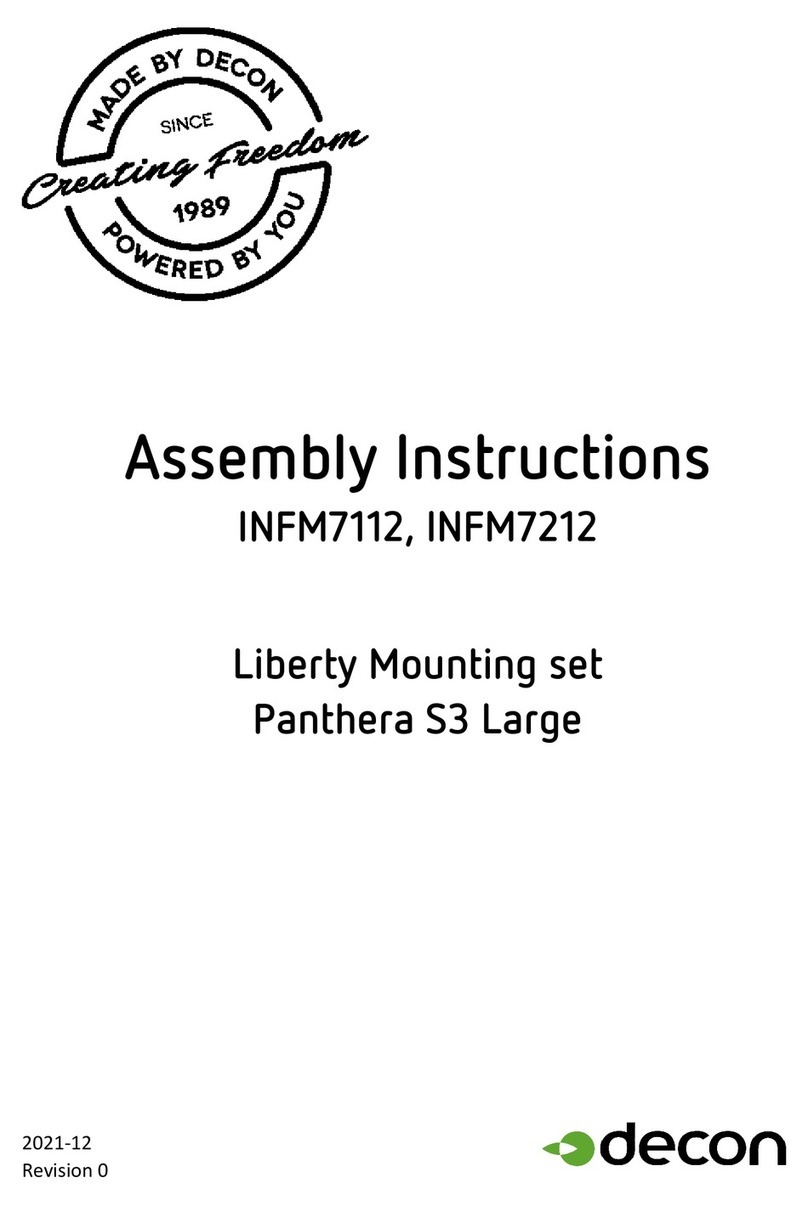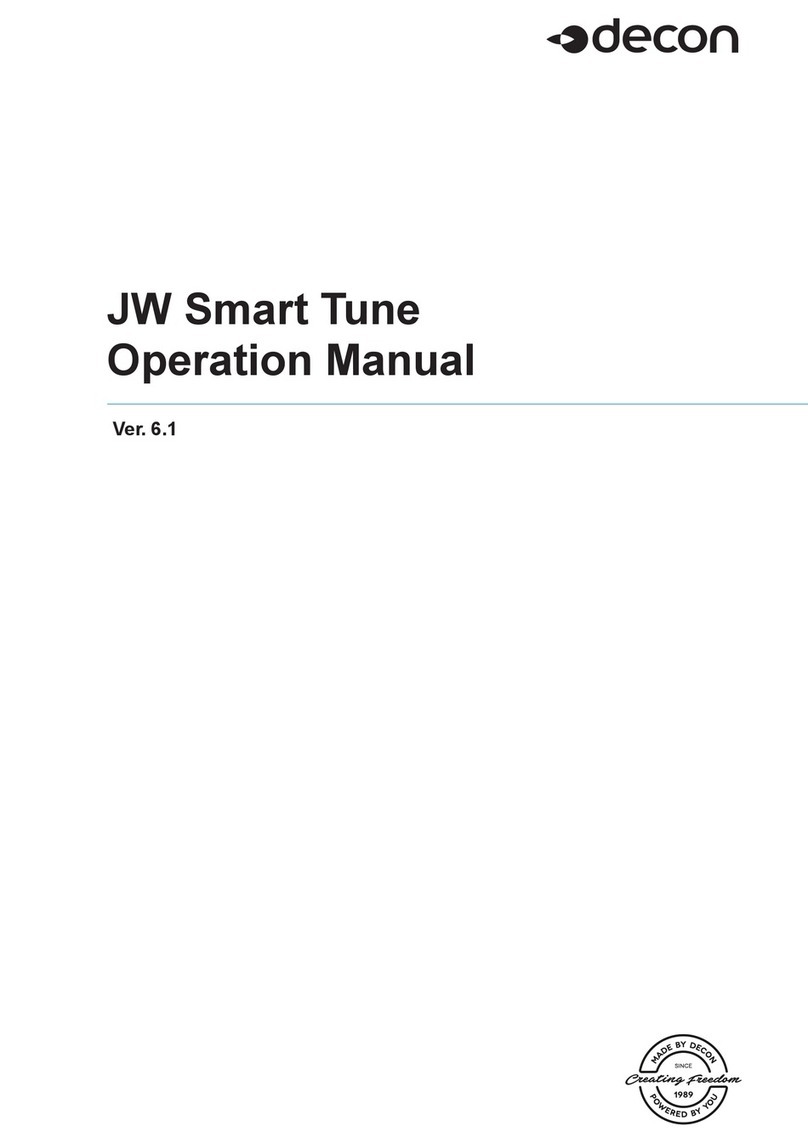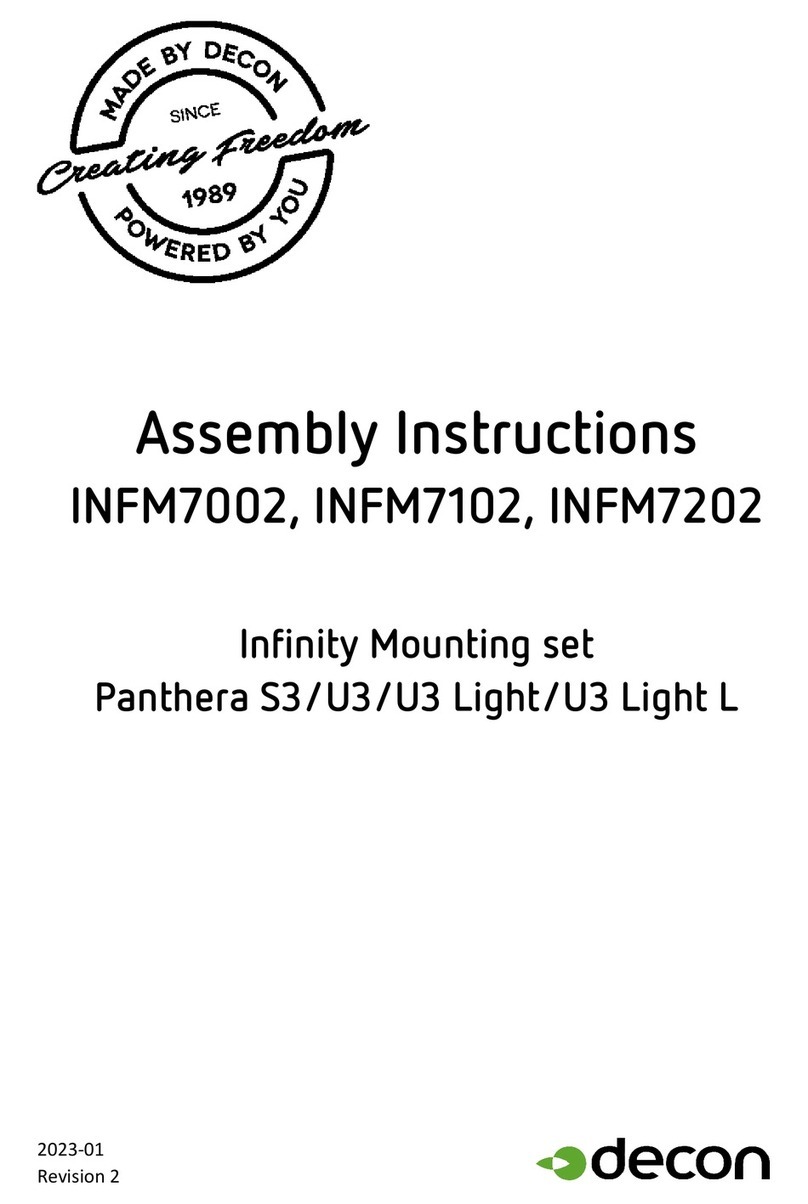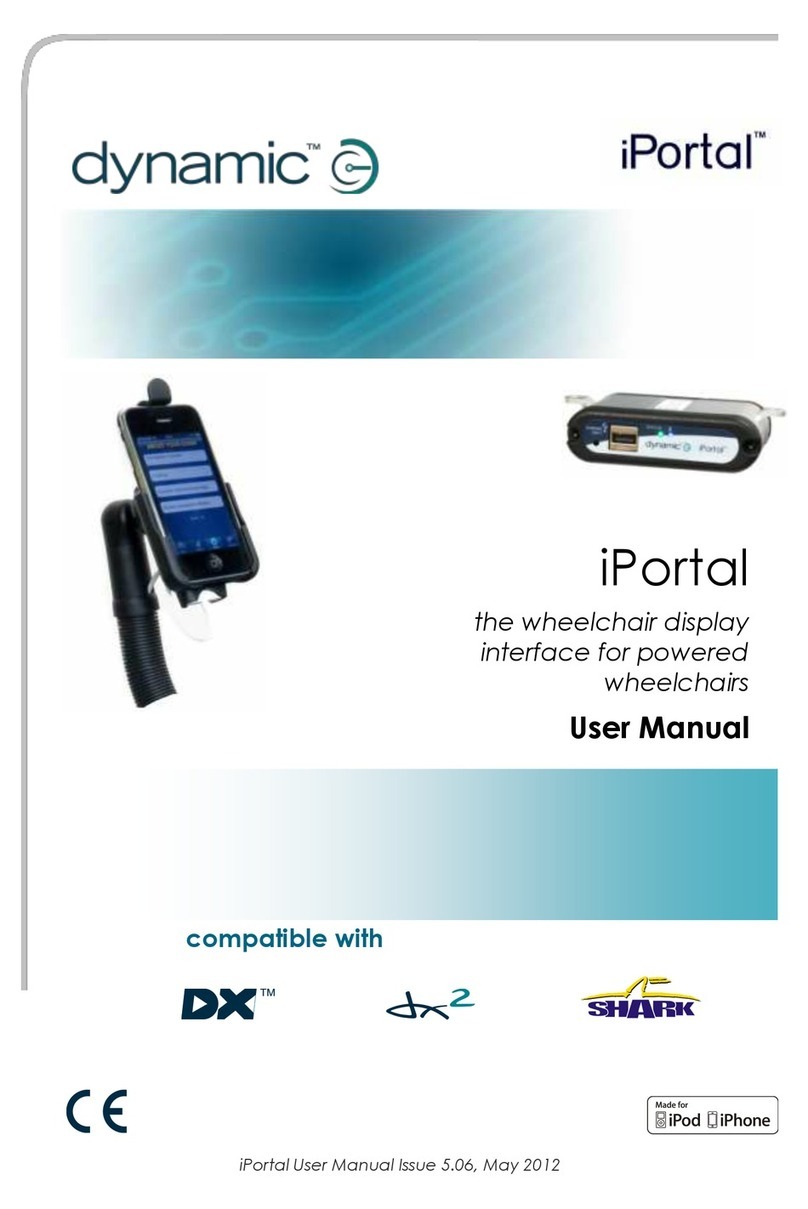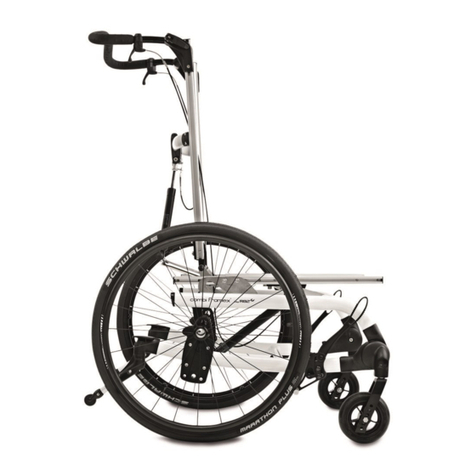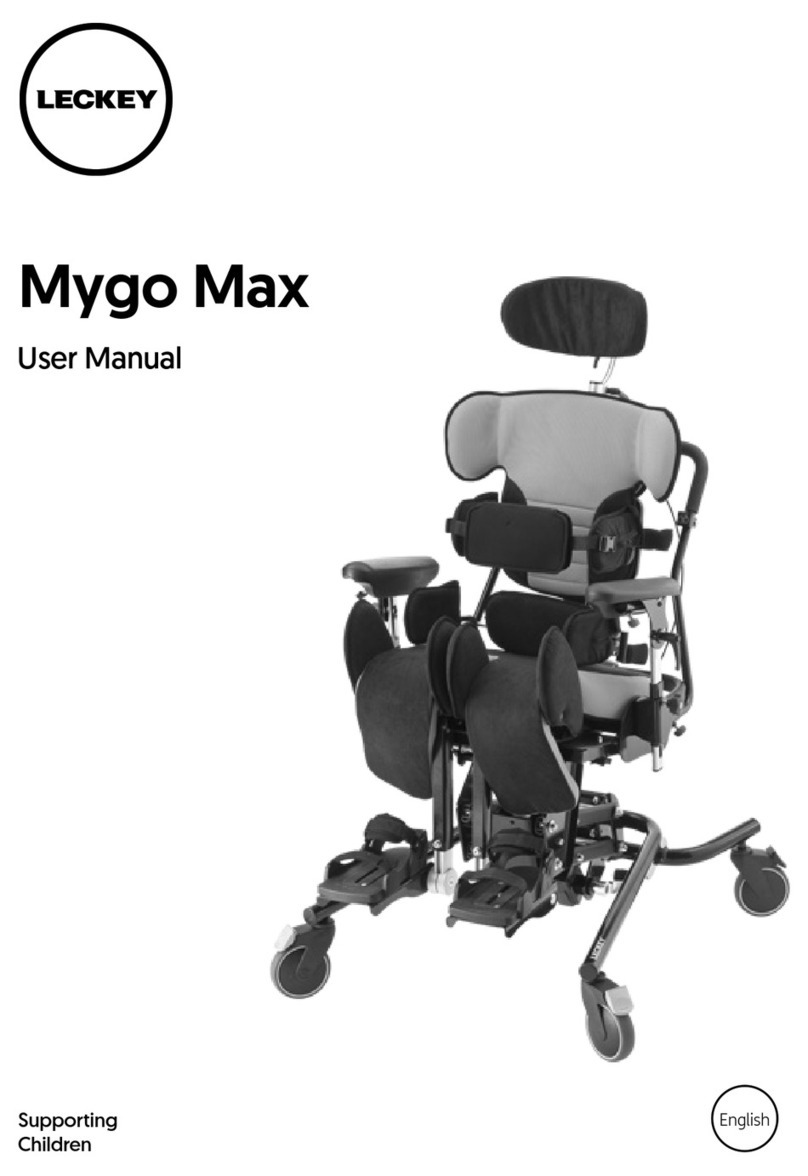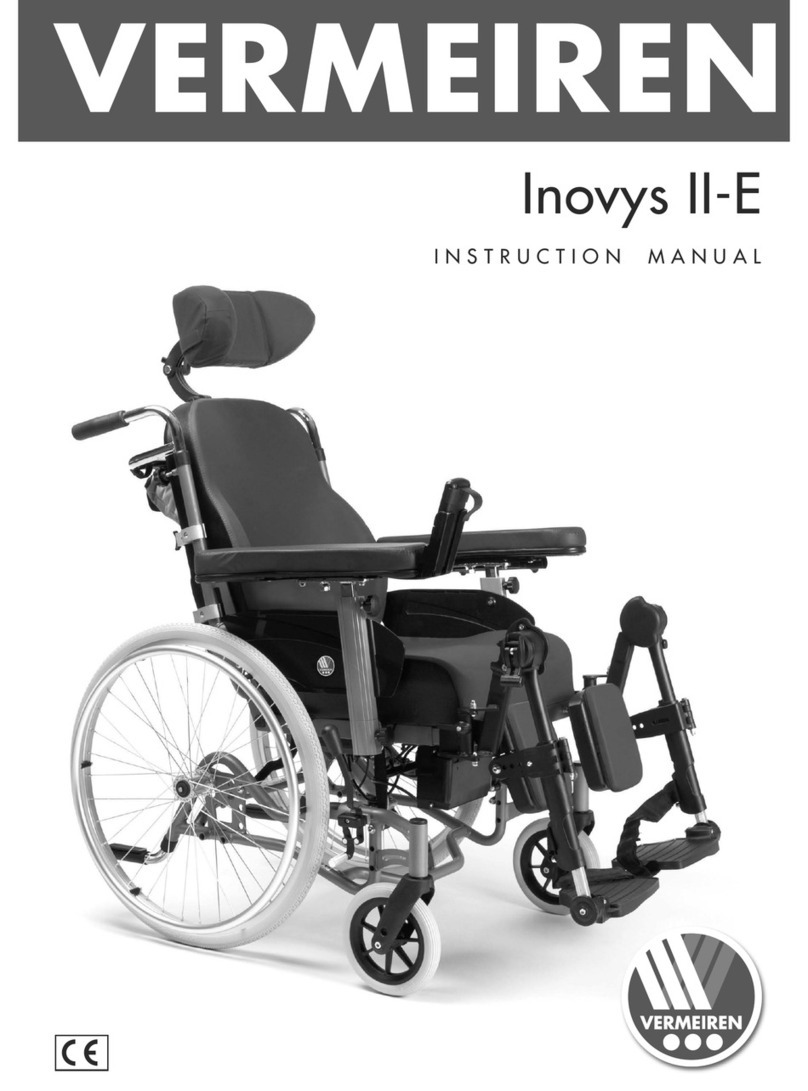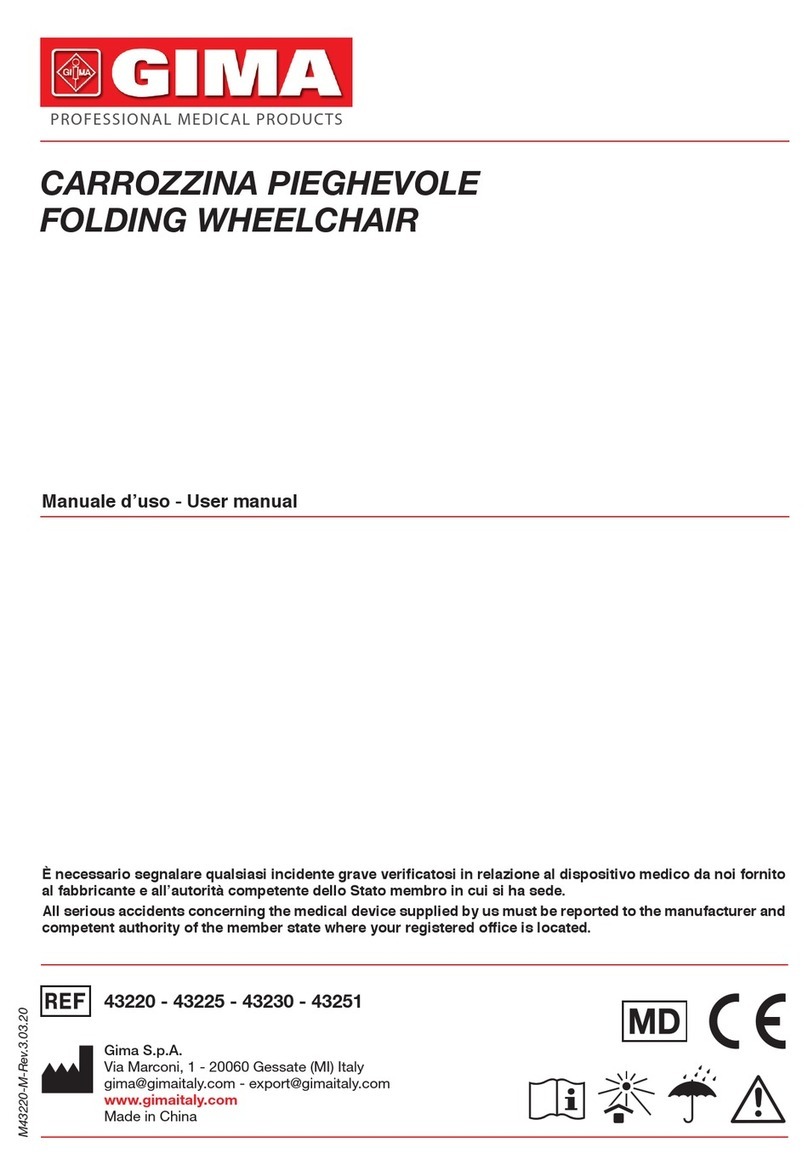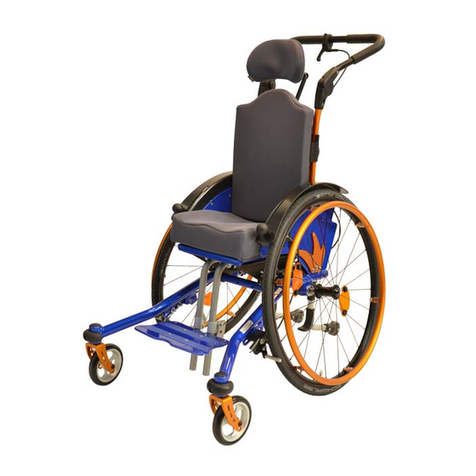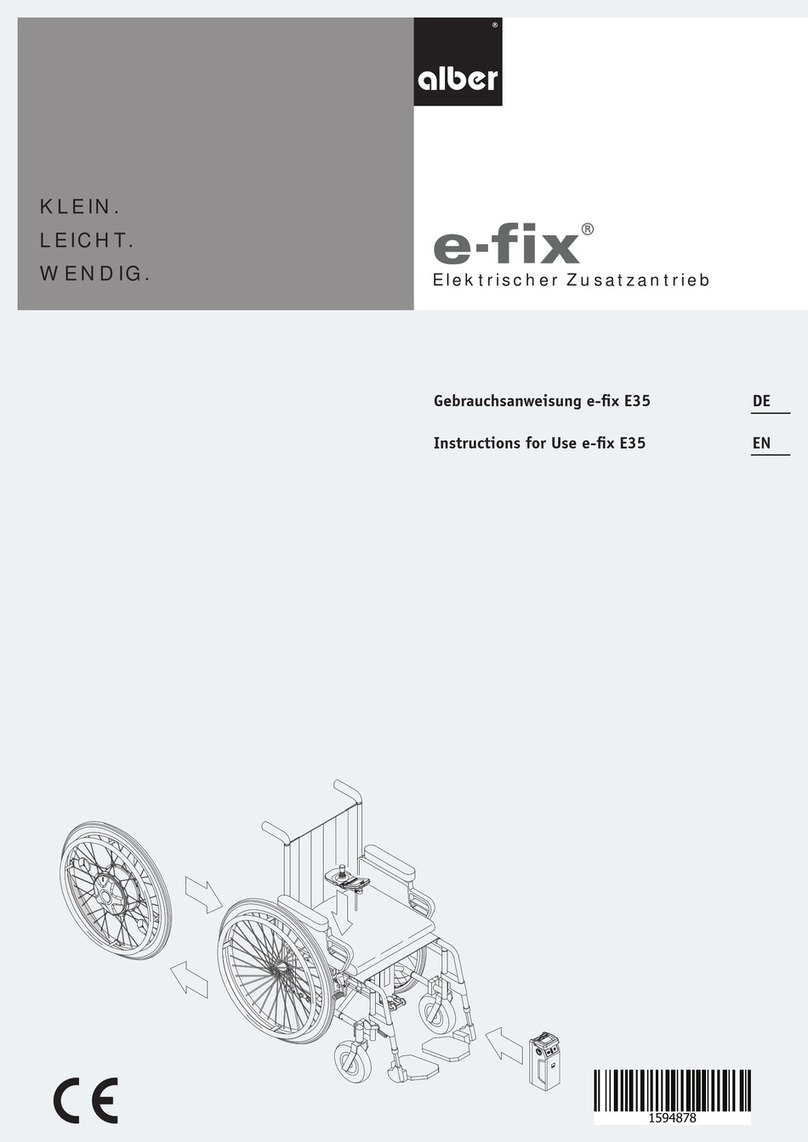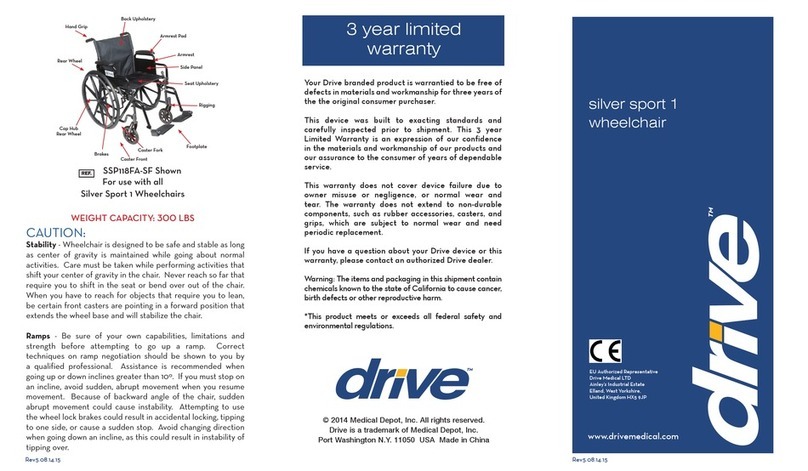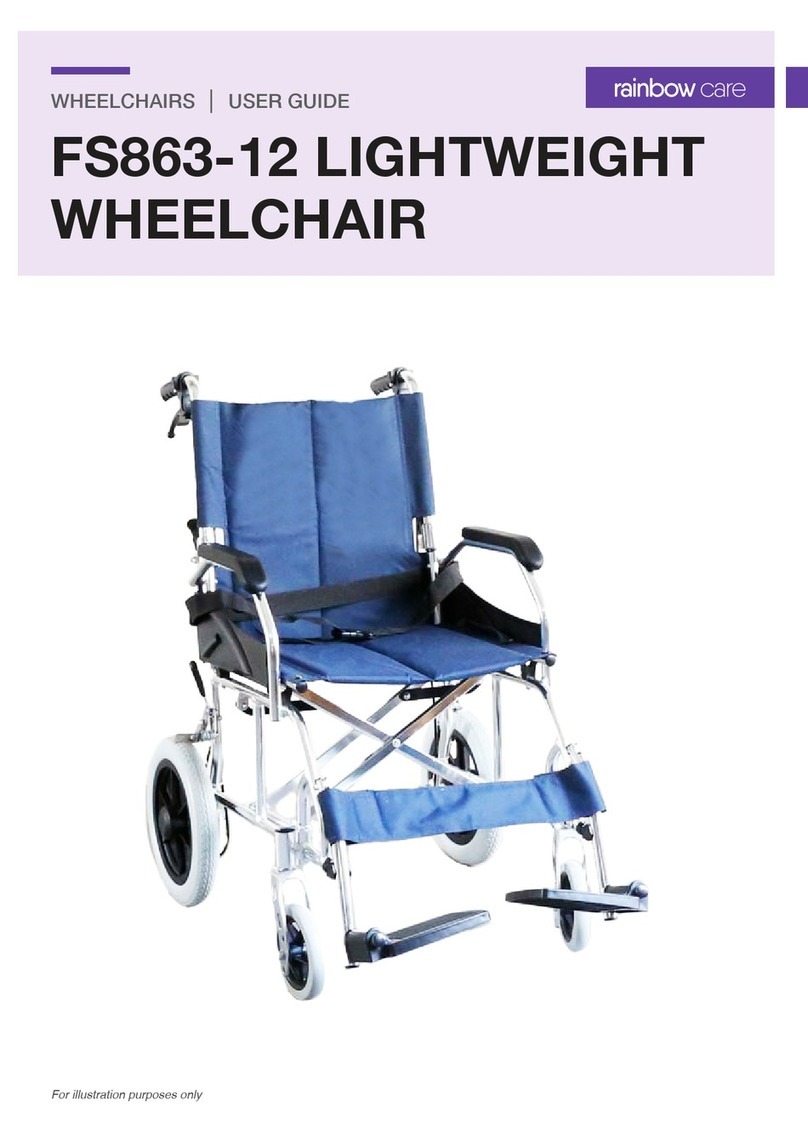decon Flexlife D9 User manual

Flexlife User Manual D9 - ENG
2020-03
Revision 2
Flexlife
Model D9
User manual

Flexlife User Manual D9 - ENG 2
2020-03
Revision 2
EC DECLARATION OF CONFORMITY ................................................................................................................... 5
TO THE CUSTOMER ........................................................................................................................................... 6
VARIANTS OF FLEXLIFE ............................................................................................................................................ 6
SAFETY .............................................................................................................................................................. 7
PURPOSE AND INTENDED USE ................................................................................................................................... 7
NOT INTENDED USE ................................................................................................................................................ 7
GENERAL REGULATIONS .......................................................................................................................................... 7
MANUALS FOR THE VISUALLY IMPAIRED ...................................................................................................................... 7
USER, DISTRIBUTOR AND PROFESSIONAL TECHNICAL STAFF .............................................................................................. 7
SECURITY SYMBOLS ................................................................................................................................................ 8
INFORMATION ON ELECTROMAGNETIC INTERFERENCE ..................................................................................... 9
ELECTROMAGNETIC INTERFERENCE FROM RADIO WAVES ................................................................................................. 9
PRODUCT TYPE LABELING .................................................................................................................................. 9
LABEL ................................................................................................................................................................. 9
SAFETY INSTRUCTIONS .................................................................................................................................... 10
USERS ............................................................................................................................................................... 10
CO-FOLLOWER .................................................................................................................................................... 10
WHEN USING ...................................................................................................................................................... 11
AT STANDSTILL .................................................................................................................................................... 11
USE ................................................................................................................................................................. 12
TRANSPORT BY PRIVATE VEHICLE ........................................................................................................................... 12
SURFACE ......................................................................................................................................................... 12
PUBLIC ROADS .................................................................................................................................................... 13
USE IN PUBLIC TRANSPORT, ETC. ............................................................................................................................. 13
USE IN FLIGHT ..................................................................................................................................................... 13
BALANCE WHEN DRIVING ................................................................................................................................... 14
IN AND OUT OF THE WHEELCHAIR ............................................................................................................................ 14

Flexlife User Manual D9 - ENG 3
2020-03
Revision 2
CHANGE IN THE BODY'S CENTER OF GRAVITY .............................................................................................................. 15
OBSTACLE TAKING ............................................................................................................................................... 16
BACKING DOWN .................................................................................................................................................. 16
SLOPES .............................................................................................................................................................. 17
LOAD ................................................................................................................................................................ 17
STAIRS .............................................................................................................................................................. 17
INSTALLATION INSTRUCTION .......................................................................................................................... 18
FOLD AND FOLD UP ............................................................................................................................................. 18
FOLD ........................................................................................................................................................................... 18
FOLD UP ...................................................................................................................................................................... 19
FOLD UP AND DOWN THE ARMRESTS ........................................................................................................................ 19
ADJUST THE LOCKING LATCH ............................................................................................................................. 20
SEATBELT ........................................................................................................................................................... 21
INSTALLATION OF THE SEAT BELT ...................................................................................................................................... 21
UNBUTTONING THE BELT ................................................................................................................................................ 21
JOYSTICK ........................................................................................................................................................... 22
ERROR DIAGNOSTICS ...................................................................................................................................... 23
INTRODUCTION ................................................................................................................................................... 23
MALFUNCTIONS AND SOLUTION OF PROBLEMS ........................................................................................................... 23
USAGE AND FUNCTIONS ........................................................................................................................................ 25
USE THE JOYSTICK TO CONTROL THE WHEELCHAIR ............................................................................................................... 25
FUNCTION OF THE JOYSTICK ............................................................................................................................................ 26
SIGNALHORN ................................................................................................................................................................ 27
USING THE BRAKE .......................................................................................................................................................... 27
BATTERY ............................................................................................................................................................ 28
REMOVE AND INSERT BATTERY ......................................................................................................................................... 29
CHARGE THE BATTERY .................................................................................................................................................... 30
CHARGING STATUS CHECK ............................................................................................................................................... 30
OVERCHARGE PROTECTION ............................................................................................................................................. 31
POWER PROTECTION ...................................................................................................................................................... 31
BATTERY CLEANING ....................................................................................................................................................... 31
STORAGE OF FLEXLIFE ........................................................................................................................................... 32
CARE AND CLEANING ............................................................................................................................................ 32
MAINTENANCE BY USER ........................................................................................................................................ 33
LIFE EXPECTANCY ................................................................................................................................................. 33
REPAIRS ............................................................................................................................................................ 34

Flexlife User Manual D9 - ENG 4
2020-03
Revision 2
TRANSFER TO ANOTHER USER ................................................................................................................................. 34
PRODUCT DATA .............................................................................................................................................. 34
SCOPE OF DELIVERY .............................................................................................................................................. 35
WHEELCHAIR PARTS ............................................................................................................................................. 36
WARRANTY ..................................................................................................................................................... 37
SCOPE ............................................................................................................................................................... 37
PRODUCT SAFETY AND RECALL INFORMATION ............................................................................................................ 37
INCIDENT MANAGEMENT ....................................................................................................................................... 37
CONTACT ........................................................................................................................................................... 37


Flexlife User Manual D9 - ENG 6
2020-03
Revision 2
TO THE CUSTOMER
Dear customer,
Thank you for purchasing a Flexlife D9, which is designed by Decon Wheel AB. The collapsible electric wheelchair you
now own has very high performance in terms of quality, safety, comfort and portability.
Flexlife gives you increased opportunities for an active life.
Before using your Flexlife for the first time, read this user manual carefully. This instruction will help you understand
performance, handling and appropriate maintenance.
If you are unable to control your Flexlife yourself or need more advice and help, please contact your dealer for
guidance and help.
VARIANTS OF FLEXLIFE
Flexlife is marketed in two designs:
1. Standard
2. Comfort – this model includes pressure relieving cushion, front and rear lighting and polstered armrests.
Standard Comfort

Flexlife User Manual D9 - ENG 7
2020-03
Revision 2
SAFETY
PURPOSE AND INTENDED USE
Flexlife is a smooth, collapsible, lightweight and comfortable electric wheelchair. The wheelchair is powered by DC
motors that can be used indoors and outdoors. It is an individual transport for the disabled and the elderly. The weight
of the person shall not exceed that stated in the technical specification in this manual.
The prerequisites for using the product are that the person concerned has sufficient cognition and motor skills to be
able to drive the product safely. The assessment of the person's ability is carried out by Decon or by Decon appointed
representative as assistive technology centers and dealers.
NOT INTENDED USE
Any use that does not correspond to the description in this user manual. This also includes the technical specification,
i.e. maximum user weight, maximum reversing capability, etc.
Flexlife has two mounts designed to fasten the chair during transport.
Flexlife must not be used as a seat when using a private vehicle!
GENERAL REGULATIONS
This user manual applies to Flexlife D9.
The user manual is written for users of Flexlife and people who are in some way helpful in order for the user to get the
best benefit from Flexlife as possible.
MANUALS FOR THE VISUALLY IMPAIRED
If you have difficulty reading this user manual, please contact your local dealer. Your local dealer can deliver a digital
copy of this manual. This makes it possible to enlarge the manual or read aloud from your readout software.
USER, DISTRIBUTOR AND PROFESSIONAL TECHNICAL STAFF
Do not use your Flexlife until you have got to know it, read and understood all the instructions. If you do not
understand warnings and instructions, please contact your dealer for professional technical guidance and assistance.
Otherwise, it may cause injury or danger in case of improper use. In addition, you can complete the start-up under the
guidance of the technical staff.

Flexlife User Manual D9 - ENG 8
2020-03
Revision 2
SECURITY SYMBOLS
The signs below can help you identify some warnings regarding the use of your Flexlife.
Recognizing and understanding them is very important.
NOTE! Read and follow the guidance in this manual.
Information about a dangerous operation that could harm you or others.
Risk of material damage. An operation which, if not performed correctly, can lead to material damage.
Do not use mobile phones, laptops or other radio transmitters when in use.
Do not use batteries with different capacities and models at the same time, do not mix the old and new
batteries when replacing, change it completely. Keep tools and other metal objects far away from positive
and negative ends of the battery. Touching both poles may cause short circuits and electric shocks.
Avoid rain, snow, ice, salt and driving in the water.
Flexlife has passed the test of the electromagnetic / RF resistance to 20 V / M.
The battery contains corrosive chemicals.
The battery may be explosive in case of improper
handling.
This means that this is flammable material, do not expose to flame or spark.
Waste management and recycling. Indicates that the manufacturer/distributor has ensured
that products and batteries may be returned to the collection point for sorting. Once Flexlife
has expired and is to be scrapped, contact your local authorities for recycling information and
follow their instructions.
!"#$%&'#()$"*+,*-.,/'&,/-&#'/#,*-.%#0$to#0$,.1$,-2,*-.%'.1$3,4"$5"(2$,6(#0,7'##$%*8,

Flexlife User Manual D9 - ENG 9
2020-03
Revision 2
INFORMATION ON ELECTROMAGNETIC INTERFERENCE
Electromagnetic interference can affect the electric wheelchair, so reading and understanding this manual is very
important.
This chapter describes the problems caused by the electromagnetic interference, so that users can understand and
take corresponding protective measures to avoid or minimise the risk. Some content deals with accidents in certain
environments or conditions.
ELECTROMAGNETIC INTERFERENCE FROM RADIO WAVES
An electric wheelchair is susceptible to electromagnetic interference. Electromagnetic energy is usually emitted from
radio, television, radio transmitters, two-way radios and mobile devices. This electromagnetic interference can cause
control problems for, among other things, the brakes. It can also cause permanent damage to the control system, so
a product's ability to withstand electromagnetic interference is particularly important. Flexlife has passed the
resistance of the 20 V/m electromagnetic interference test, so it has high anti-interference and can withstand some
common radiation/electromagnetic interference in everyday life.
Although Flexlife is able to handle disruptions, users should still follow the following rules:
• Once the power supply is connected, do not use radios such as transmitters, receivers, and personal
communication devices such as cell phone, etc.
• Try to avoid getting close to the radio source, such as radio, TV, etc.
• If your Flexlife starts to lose control, the user should turn off the power supply immediately and contact the
manufacturer. Do not replace any part of this electric wheelchair.
PRODUCT TYPE LABELING
LABEL
The label is placed on top of the controller box.

Flexlife User Manual D9 - ENG 10
2020-03
Revision 2
SAFETY INSTRUCTIONS
USERS
Before using your Flexlife, keep tools and other metal objects away from the positive or negative of the battery, if
exposed to both ends, it may cause short circuits and electric shock.
• Health and care professionals should have been trained and given professional guidance for use.
• Before using your Flexlife, make sure you have learned how to use it.
• Practice certain tasks with the help of health care professionals, such as swinging, coping with obstacles and
braking until you are independent and skilled in performing these tasks.
• Don't try new difficult situations when you can't ensure safety.
• Make sure you know the area you are going to, and check for danger or not, and master your Flexlife to avoid
any risks.
CO-FOLLOWER
• You need to cooperate with the user and listen to any recommendations of the user's doctor, occupational
therapists or physiotherapists and make a plan that is best suited to the user's ability.
• When running Flexlife with your hands, you must turn off the electromagnetic bridge switch so that the
wheelchair is set to manual mode.
• When running Flexlife with your hands, you need to use the bow in the backrest. This can provide safe driving
and prevents the wheelchair from tipping backwards when you push.
• Check the backrest lock so that it cannot rotate or slide when the user is running over obstacles.
• To prevent damage to the user's back, make sure that the user is in the correct seat balance When lifting or
supporting the user or Flexlife, you can bend the knees a little and hold the back vertically.
• Before each movement, tell the user what you want to do and explain the reason and tell them what you want
them to do at the same time. This allows the user to prepare and reduces the risk of accidental injury.
• To back up a slope or edge, remind the user to lean back.
• Before driving up or down an edge, slow down to avoid damage to you, the user and Flexlife.

Flexlife User Manual D9 - ENG 11
2020-03
Revision 2
WHEN USING
• In case of collision, you must release the joystick.
• If you feel that the joystick has changed behaviour,
contact your ordinator or supplier for verification and
any programming.
• Keep your body as upright as possible.
• Avoid hitting edges at too high a speed while driving.
AT STANDSTILL
When you stop your Flexlife, even temporarily, make sure the power is turned off.
This may prevent:
• that you or others touch the joystick by mistake and cause
unexpected movements.
• that your Flexlife is affected by possible electromagnetic interference
which may mean that it reacts in an unexpected way.
Make sure that others, including someone to help you (such as the shop assistant)
know how to use the joystick.

Flexlife User Manual D9 - ENG 12
2020-03
Revision 2
USE
• This wheelchair should not be used under heavy rain, snow or ice conditions.
• Batteries and control box must not have direct contact with water as this may cause electrical failure.
• Avoid damp environments. Frame, motor and other electric wheelchair parts are not waterproof, this may involve
rust attack or corrosion.
• To prevent malfunctioning in Flexlife, the following procedures are strictly prohibited.
• Do not use this type of electric wheelchair in a swimming facility or sauna.
• You must not use a high pressure cleaner or flush water on your Flexlife. If it has become wet, remove the
battery as soon as possible and try to make sure the battery is dry when used again.
• Make sure the battery cover is closed.
• If the joystick is broken, replace it as soon as you can
• Make sure that all electrical connections are safe and fixed.
• If you have to use it on wet or slippery surfaces, be careful and drive slowly forward.
• If one or two main wheels lose traction, you must stop immediately if the wheelchair is out of control.
• If there is snow, ice, water or oil on the slope or on the ramp, do not attempt to run down.
• When you don't know if it's safe to move or not, ask for help.
• Turn off the power supply when Flexlife is not in use, place it in a dry and clean place after charging.
• Avoid storage in direct sunlight or in places where the temperature may be high.
TRANSPORT BY PRIVATE VEHICLE
Flexlife has two mounts designed to clamp the chair during transport.
Flexlife must not be used as a seat when using a private vehicle!
SURFACE
• Flexlife is suitable for concrete, asphalt and indoor floors.
• Flexlife should not be used in loose sand or rough dirty terrain as this may result in damage to wheels, bearings,
axles or engine parts as well as to loose fasteners.

Flexlife User Manual D9 - ENG 13
2020-03
Revision 2
PUBLIC ROADS
In most countries and regions, wheelchairs on public roads are illegal.
• The user must realize that it is dangerous to drive
wheelchair on the road or in the parking lot.
• To be more easily visible in the dark, there are mounted
reflectors on Flexlife (Fig. 1 and 2).
• The user can also wear reflective functional clothing.
• When meeting with other vehicles, make sure that the driver
have noticed you. Before you continue to run, provision
contact the driver and let the driver know your intention.
USE IN PUBLIC TRANSPORT, ETC.
• Do not try to drive Flexlife when you are on moving public transport such as bus, subway, train, aircraft,
ships etc.
• When driving Flexlife onto public transport, you should be accompanied by someone, look for a reliable
place to park, turn off the power supply.
• If the user uses Flexlife alone in public transport, they should look for a place where the wheelchair or
wheels can be fixed to avoid damage caused by the sudden braking of the vehicle.
• Do not place Flexlife in front of other vehicles so as not to cause unnecessary interference.
• Flexlife has two mounts designed to secure the chair during transport.
USE IN FLIGHT
When ordering a flight, you should always inform the airline in advance that you should bring an electric
wheelchair and follow their instructions. Please provide the airline with detailed information on this in
connection with the booking.
For flight, the standard batteries can be used. They have the following specifications:
• Title Battery Flexlife D9
• Item FLD09-2005
• Voltage 24 V
• Capacity 6 Ah, (144 Wh) per batteri. 2 batteries in total (288 Wh)
• Type Lithium
• Weight 1065 g/piece
• Size L:410 mm, H: 65 mm, W: 26mm
• Approval UN38.3 and MSDS test report SDS201712211055
It may be forbidden to bring the lithium ion battery on board and also to check it in as hand luggage.
Always consult the airline in advance.
Fig 1 Fig 2

Flexlife User Manual D9 - ENG 14
2020-03
Revision 2
BALANCE WHEN DRIVING
When driving, Flexlife should be kept in balance and with a stable centre of gravity.
The factors that affect the balance point are:
• The height and angle of the seat.
• The position and seating position of the user.
• The slope of the ramp or slope.
• Use of a backpack or other objects to change the total weight and weight distribution of the wheelchair.
If you need to modify or adjust your Flexlife, please contact your suppliers in advance and you must have the
manufacturer's approval. The modified wheelchair may need to be adjusted to correct driving deviations.
Using a modified wheelchair requires a lot of care until you are sure of balance to avoid falling or tasking.
IN AND OUT OF THE WHEELCHAIR
The user must exercise caution when moving to the electric wheelchair, and this requires good balance and
flexibility.
Avoid falling:
• When you are ready to put yourself in the electric wheelchair, you need to turn off the power supply.
Otherwise, pressing the joystick may lead to unexpected movement.
• Make sure that the motors are locked and that the wheelchair does not move itself.
• Learn the safest way to move the body by a professional.
• Let others help you until you feel safe in your movements.
• Move Flexlife as close to the movement point as possible.
• Turn the front wheels forward as far as possible.
• Be careful with the footrest and fold it up as far as possible.
• Do not stand on the footrest as it may be damaged .
• Make sure your feet do not get stuck during movement.
• Make sure the armrest and footrest are not in the way.
• Sit down as quickly as possible to reduce the risk of falls.

Flexlife User Manual D9 - ENG 15
2020-03
Revision 2
CHANGE IN THE BODY'S CENTER OF GRAVITY
Stretching your arms or tilting your body will affect the center of gravity of the electric wheelchair.
If the driving method is not correct, it may cause you to fall or overturn. Several points below can reduce the
risk of personal injury or damage to your Flexlife:
• If you need to change the body's center of gravity, for example, to lift the body, do not tilt your body too
far forward or backward.
• If you have to move forward in the chair, do not lean too much (as shown in Figure 1)
• Do not use your hand to reach distant objects, if you are out of balance.
• Do not try to pick up the goods between your knees or in front of your body. (As shown in Figure 2)
• Do not stretch the body back to the limit that the chair can tip over and cause serious injury.
Remember:
• Move your Flexlife as close to the item you want to reach.
• Turn the front wheels forward, making the wheelchair more stable.
.
1
2

Flexlife User Manual D9 - ENG 16
2020-03
Revision 2
OBSTACLE TAKING
You have to overcome some obstacles during daily use, including threshold, elevator, ramp, pits and broken
sidewalks, etc.
Thresholds and edges can cause problems. Even a slight change in height can cause the front wheels to
stand on the side and stick
• For indoor use, it may be useful to remove or replace the thresholds.
• When driving your Flexlife, observe the surroundings to see if you can avoid any obstacles.
You can adjust your center of gravity as follows:
• When you run over an obstacle, lean forward with your body.
• When driving downhill, sit back.
When crossing a railway or tram track, you must have an assistant on hand. Getting stuck with the front
wheels in the groove poses mortal danger.
BACKING DOWN
• When reversing, you need to be extra careful. If the rear wheel hits an object, you may lose control
or fall.
• When reversing, slow down. Stop and check often to make sure there are no obstacles along the way.

Flexlife User Manual D9 - ENG 17
2020-03
Revision 2
SLOPES
On slopes, the gravity of your electric wheelchair changes.
NOTE: "slope" can be a ramp or slope. If you don't feel safe, ask for help.
Call:
• If the slope is more than 10 ° increases the risk that the chair may tip.
• Preferably do not drive on slippery slopes (such as snow, ice, water or oil).
• If the lower part of the slope is bumpy, the risk of the front wheels getting stuck increases, be careful!
LOAD
• The maximum load of the electric wheelchair is 160 kg.
• The backrest load capacity is less than 75 kg, please do not press the backrest with more force than
that.
• Do not perform any weight training in your Flexlife and always make sure that the total weight is
below the maximum load capacity of the wheelchair.
• When the load exceeds the maximum load capacity, damage may be caused to the seat, frame,
brackets, folding, etc. It can also cause serious harm to the user himself.
• Problems caused by overload are not covered by the warranty.
STAIRS
• This electric wheelchair is not suitable for moving up and down stairs or on escalators.
When using an elevator, pay attention to the following warnings:
• Do not use the wheelchair on the escalator to avoid serious injury.
• An elevator can be used when you are in the wheelchair. Drive the wheelchair into the lift and turn
around space so you can drive out without reversing.

Flexlife User Manual D9 - ENG 18
2020-03
Revision 2
INSTALLATION INSTRUCTION
FOLD AND FOLD UP
Make sure that all parts are properly installed after adjustment, repair or maintenance, otherwise it may
cause damage.
The weight of the wheelchair (with battery) is 26 kilos, use the right way to lift to avoid injury.
FOLD
Step:
• Disconnect the cable to the joystick by turning the locking ring off and pulling out correctly. (Fig 1)
• Remove the control panel/joystick by loosening the screw under the armrest and pulling it out. (fig 2a and
2b)
• Fold up the footplate and remove the seat cushion. (fig 3a and 3b)
• Push the locking latch in the back of the chair, under the backrest (fig. 4)
• Push the backrest forward until the chair folds (fig. 5a and 5b)
• The front wheels may need to be adjusted so that they do not block the frame.
• Wheelchair folding is complete. (Fig. 6)
Fig 1 fig 2a fig 2b
Fig 3a fig 3b fig 4

Flexlife User Manual D9 - ENG 19
2020-03
Revision 2
Fig 5a fig 5b Fig 6
FOLD UP
Step:
• Hold with one hand the backrest of the chair and the other hand grabs the battery tube or the front edge
of the seat.
• Push back the backrest as far possible, and make sure that the locking latch on the back snaps
• Place the seat cushion on and possibly lower the footplate (depending on the technique of moving to the
chair).
• Install the control panel /joystick (see the installation control page).
• If they are unfitted, install the anti-tipper guards.
FOLD UP AND DOWN THE ARMRESTS
• On each armrest outside there is a lever that can be turned to loosen and lock the armrests in the lowered
or raised position.

Flexlife User Manual D9 - ENG 20
2020-03
Revision 2
ADJUST THE LOCKING LATCH
If the locking latch for the folding mechanism is too sluggish or too loose, it can be adjusted by loosening or
tightening the adjustment nuts (red) on each side of the latch.
Table of contents
Other decon Wheelchair manuals
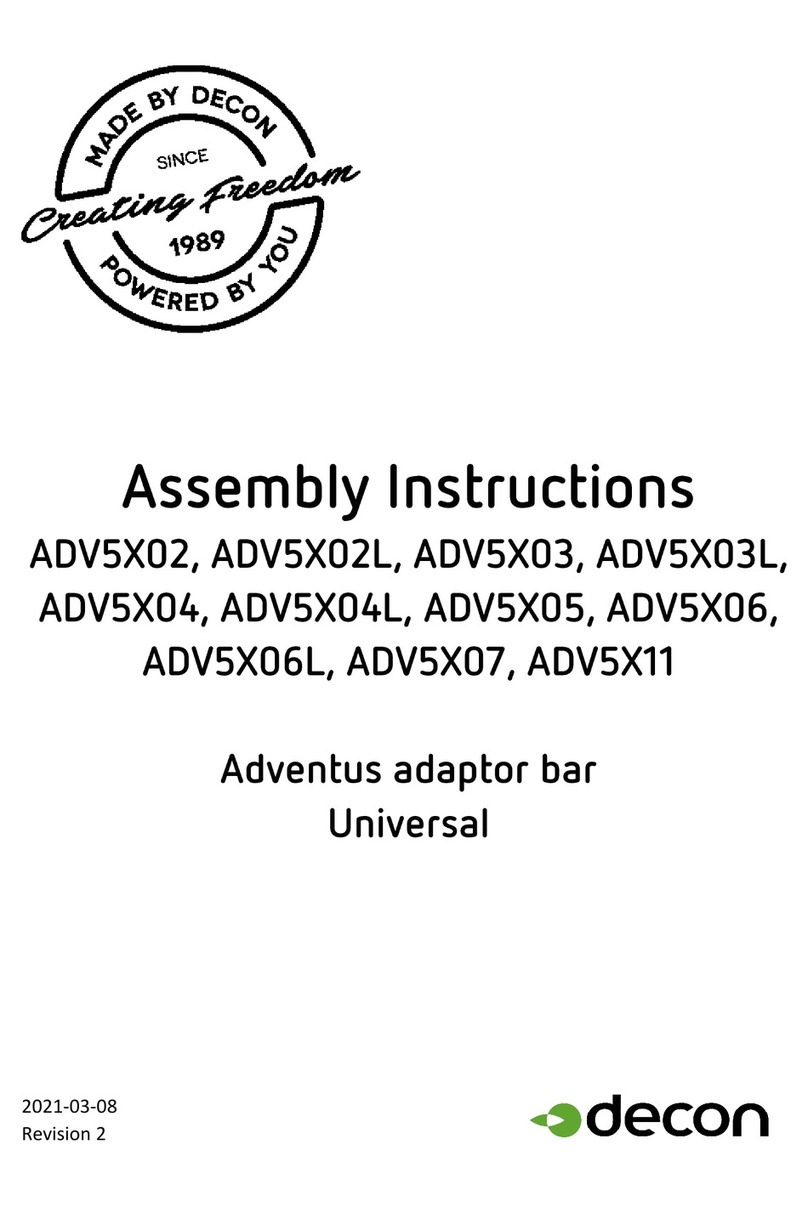
decon
decon ADV5X02 User manual
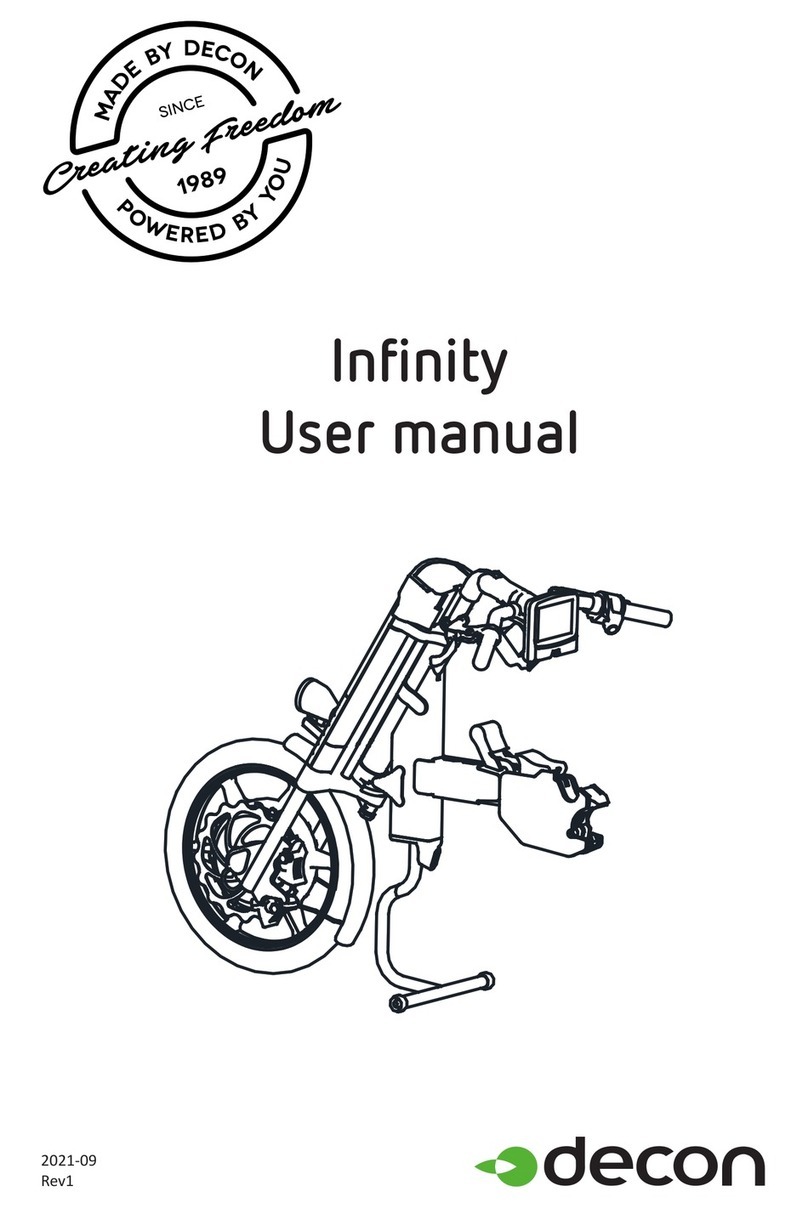
decon
decon Infinity User manual
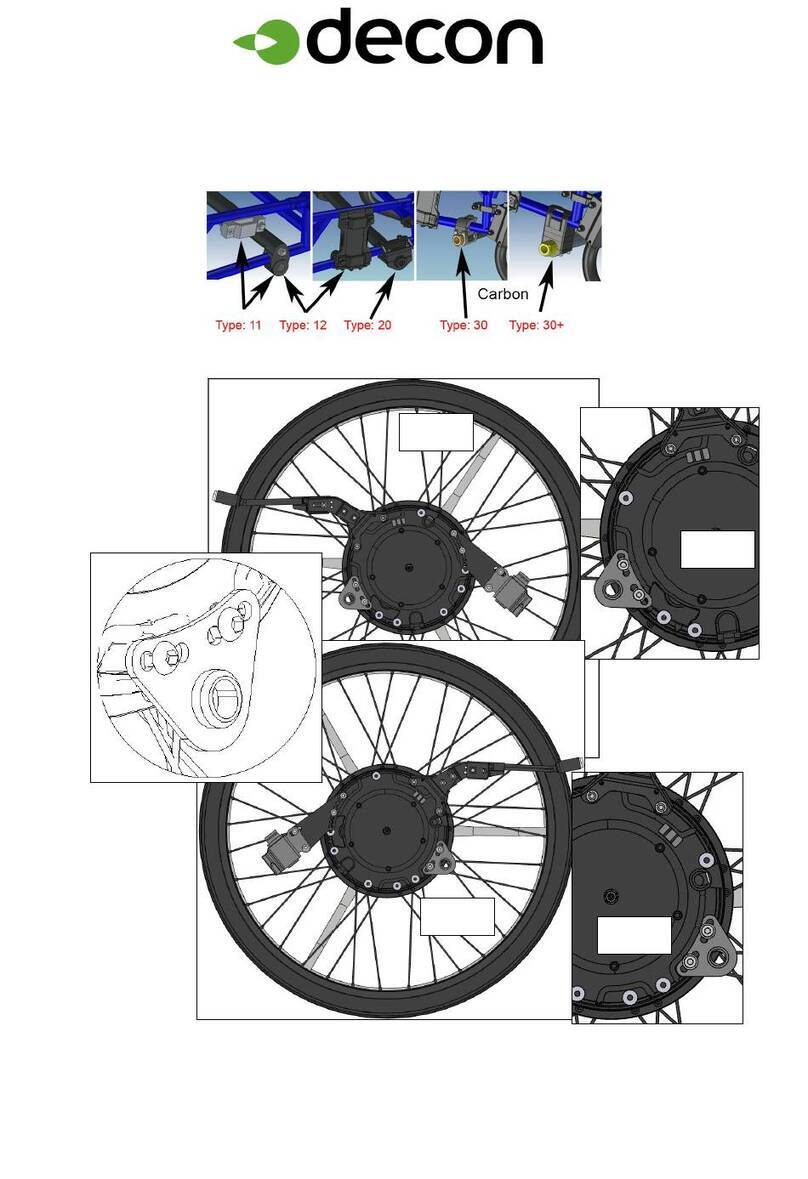
decon
decon Panthera S2/U2 User manual

decon
decon Gearwheel User manual
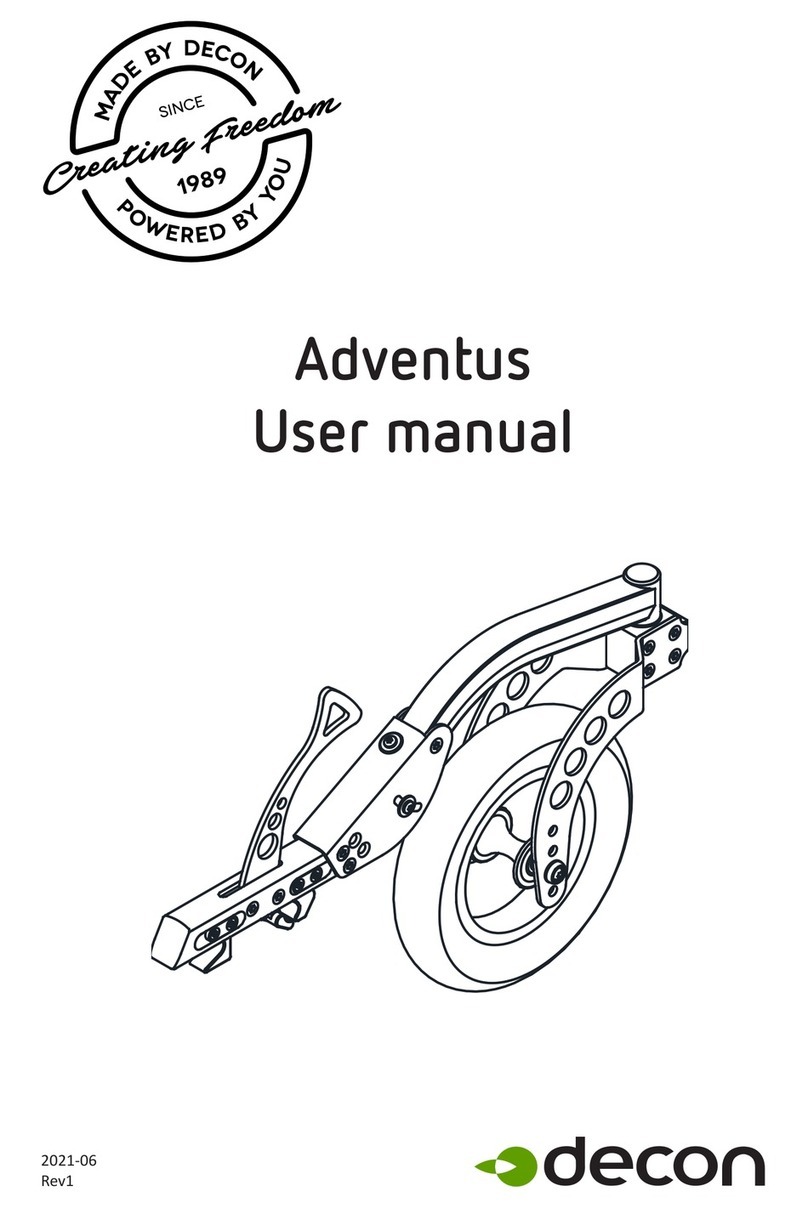
decon
decon Adventus User manual
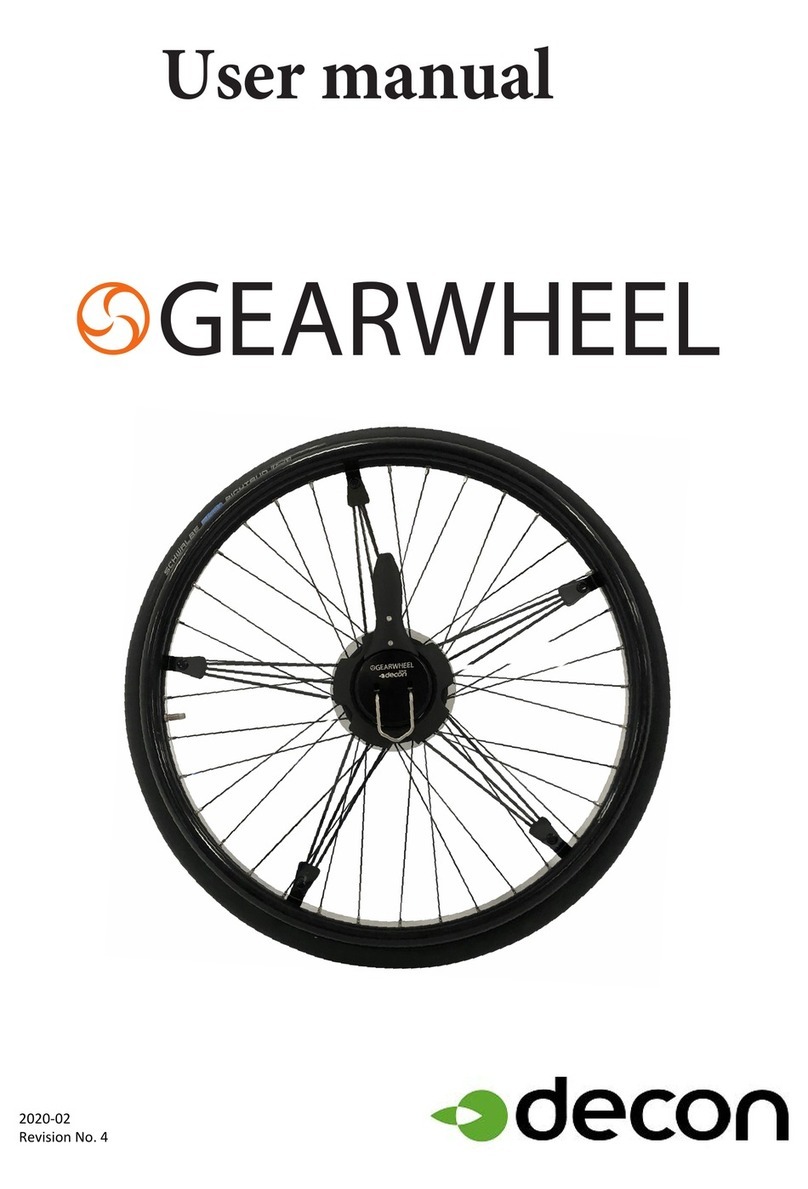
decon
decon Gearwheel GWl0S0 User manual
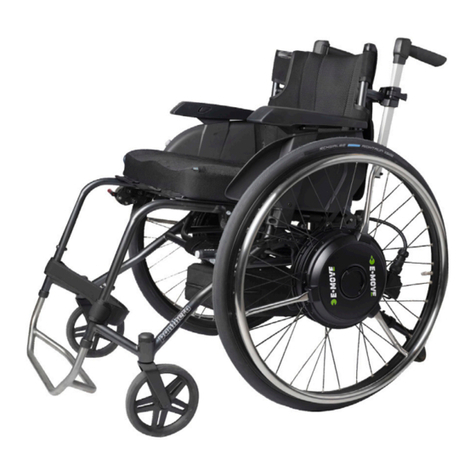
decon
decon E-Move MEM20 User manual

decon
decon Adventus Footrest Universal User manual
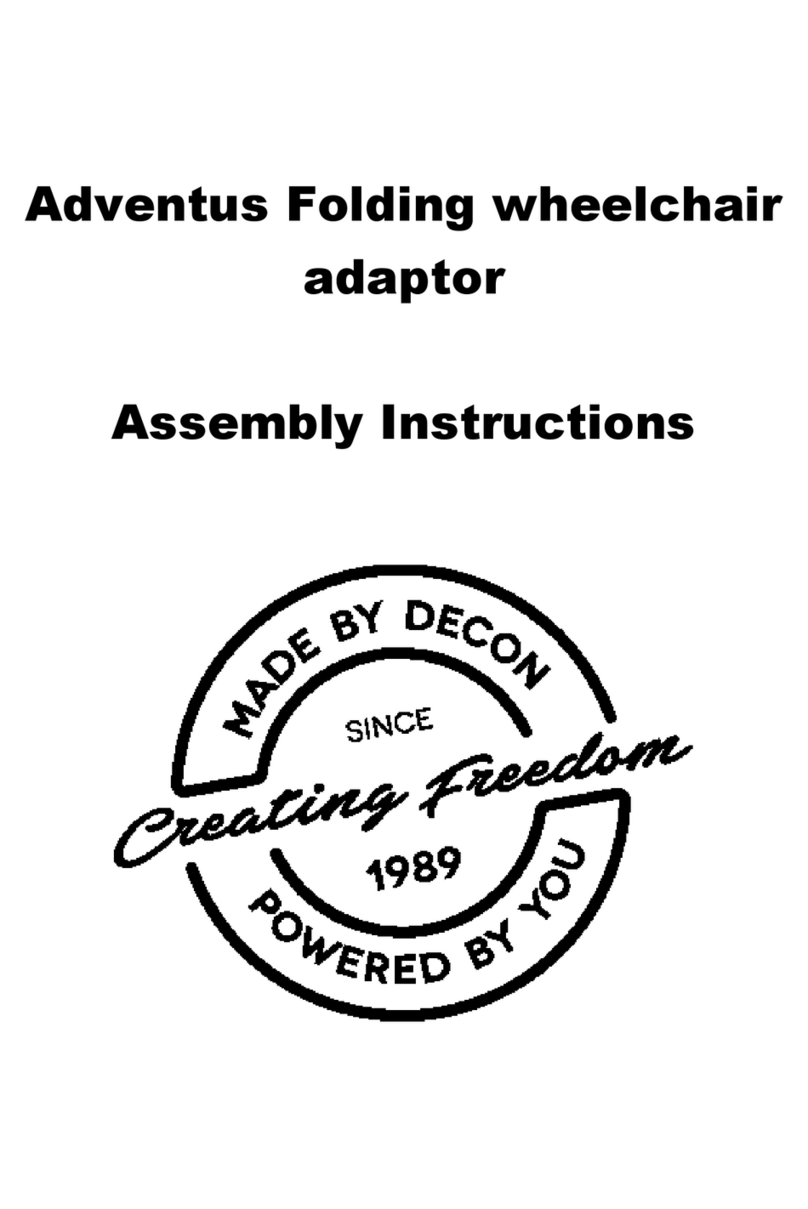
decon
decon Adventus Quick start guide

decon
decon Liberty LBM7013 User manual
Popular Wheelchair manuals by other brands

Invacare
Invacare 9000 Topaz Owner's operator and maintenance manual

Küschall
Küschall CHAMPION quick start guide
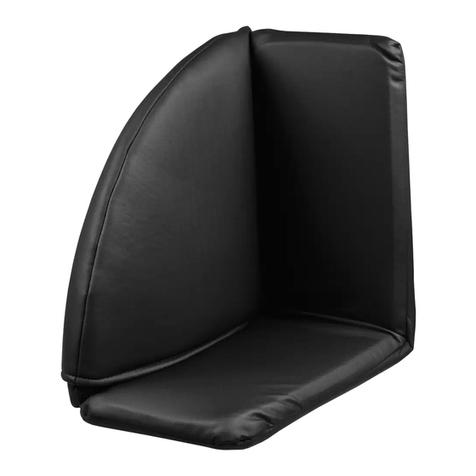
Comfort Company
Comfort Company FLEXION FOOTBOX SINGLE manual
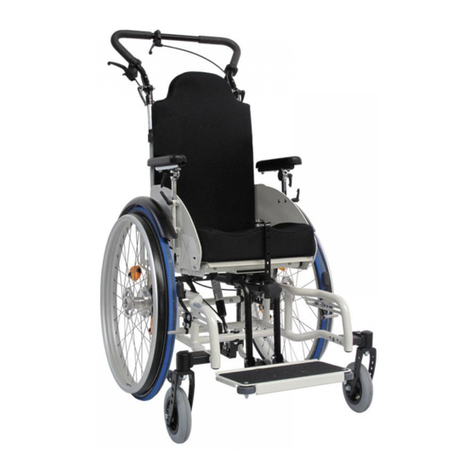
SORG
SORG Tilty vario Instructions for use

Invacare
Invacare rea Azalea Series Mounting instruction
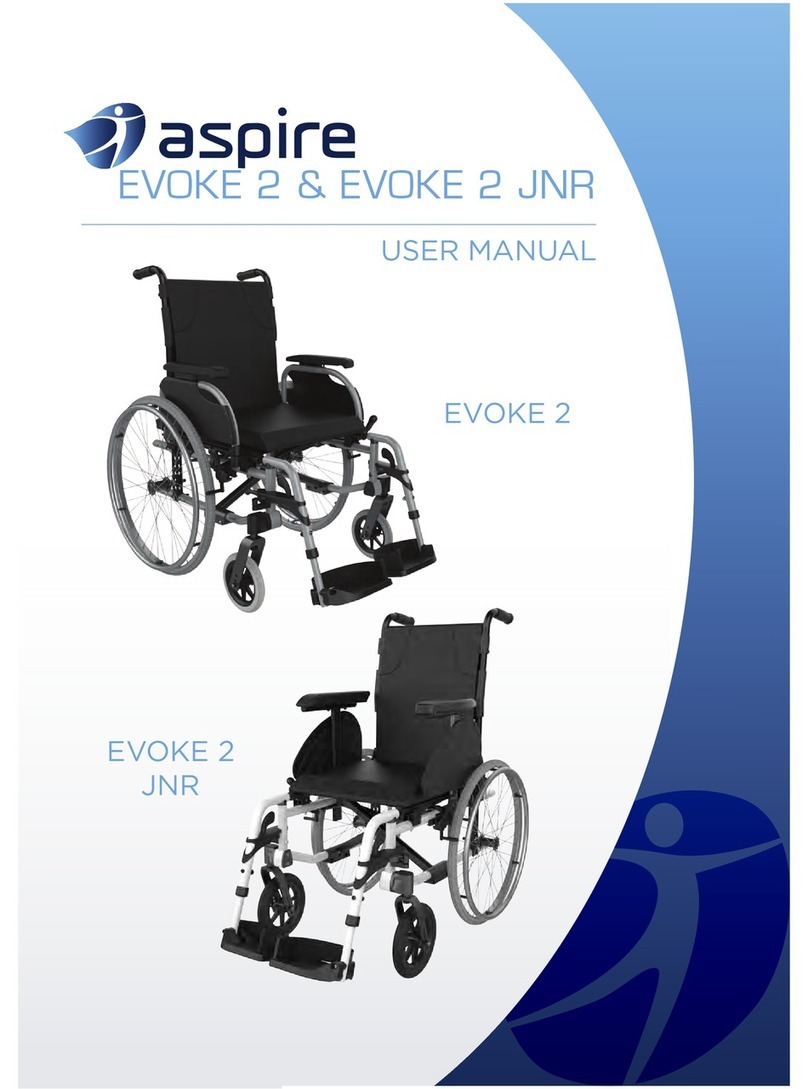
Aspire
Aspire EVOKE 2 JNR user manual

